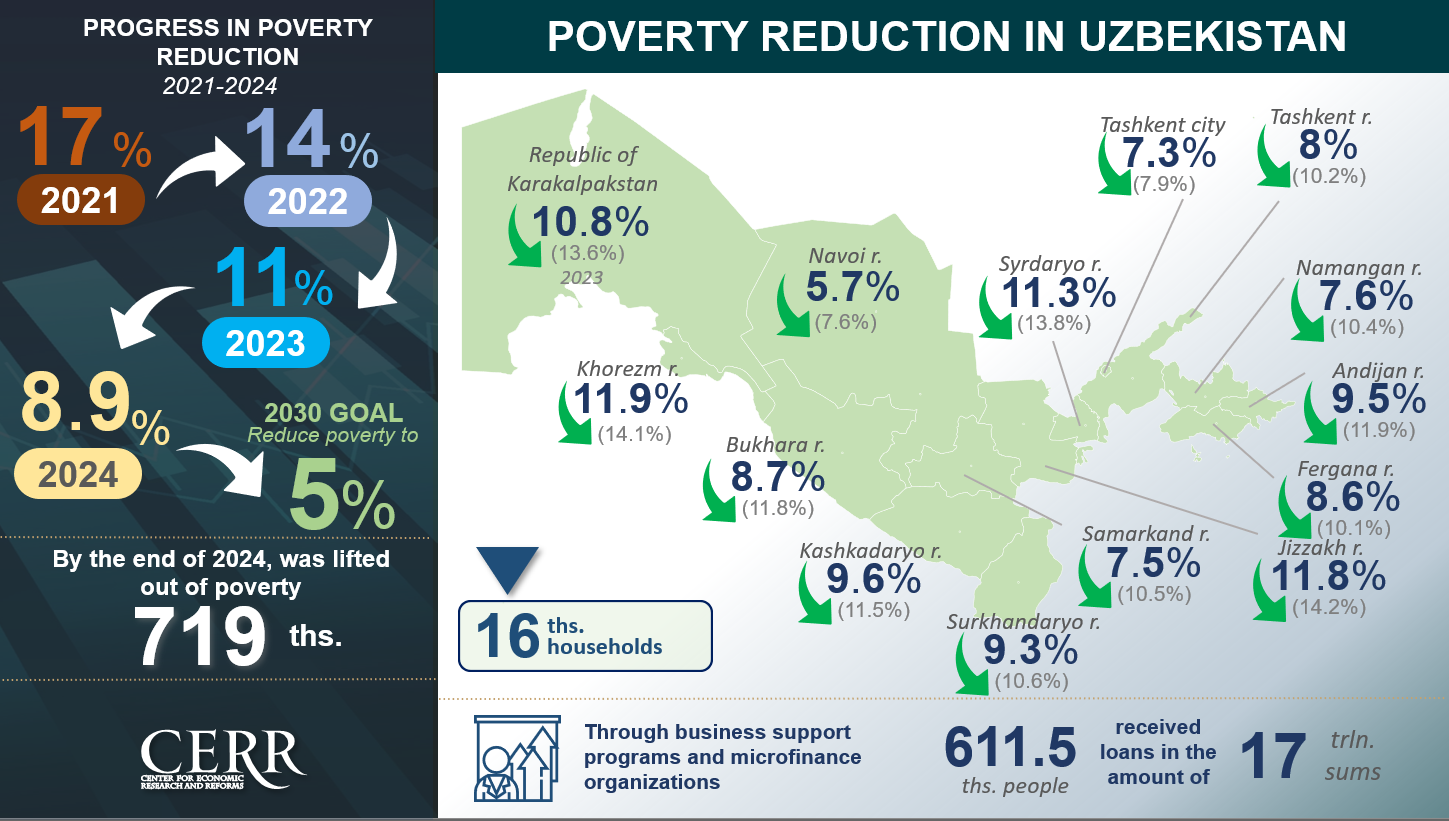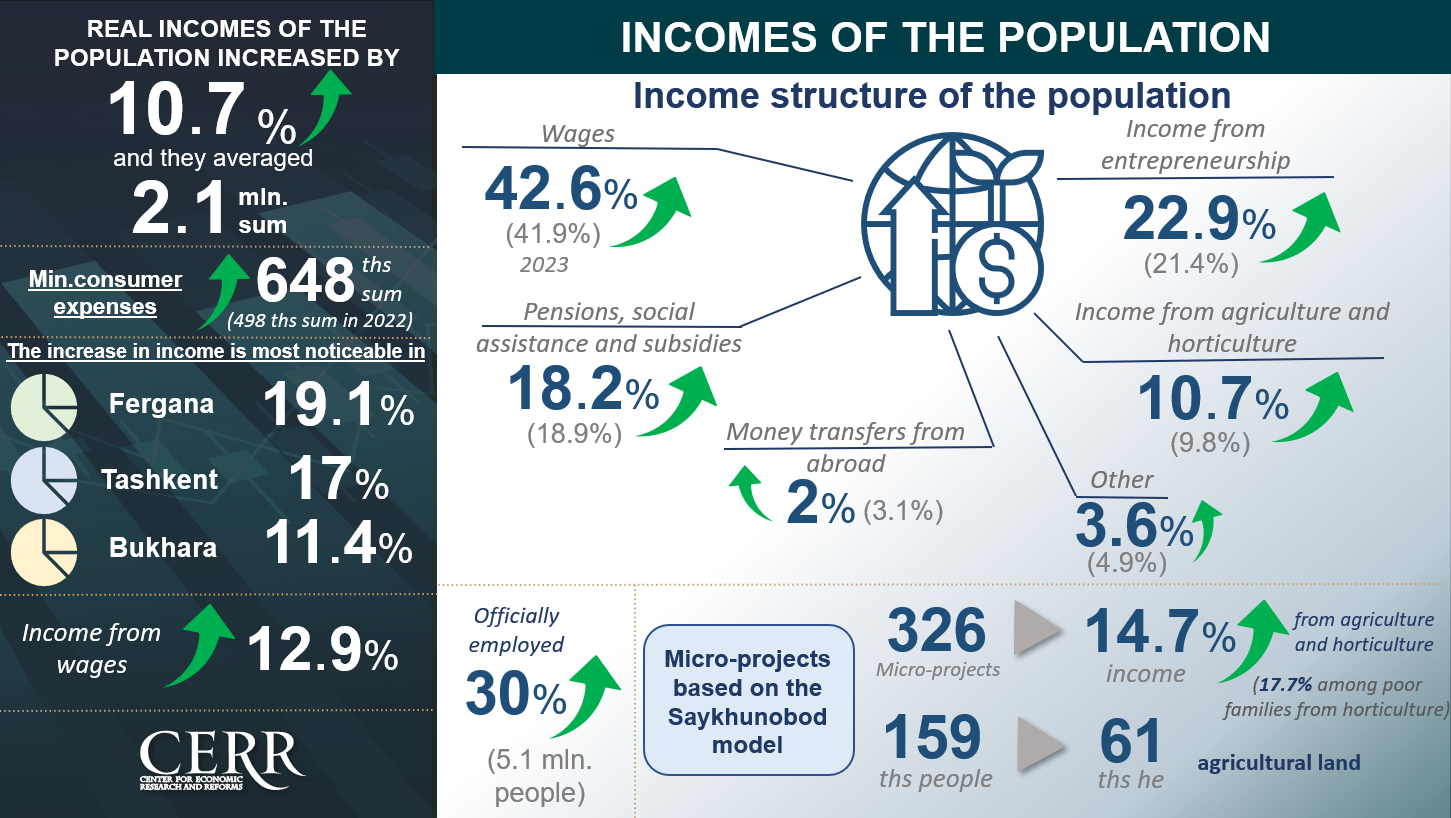According to the Agency of Statistics under the President of the Republic of Uzbekistan, based on research conducted in collaboration with the World Bank, the poverty rate in Uzbekistan fell to 8.9% in 2024.
The Center for Economic Research and Reforms conducted an analysis of changes in the welfare level of the population of Uzbekistan for 2022-2024 based on data from household budget surveys across the Republic.
It should be noted that the measurement of the poverty level in Uzbekistan has been revised based on the best international practices. The international calculation method used is based on the World Bank's concept.
In particular, household budgets across the country are studied throughout the year. The method of measuring the poverty level is based on income assessments, which have significantly increased in recent years.
According to estimates, in the 2021 survey, about 10,000 households participated, in 2022 the coverage exceeded 14,000, while in 2024 more than 16,000 families were surveyed across the country.

Poverty Level in Uzbekistan
In 2023, the poverty rate in the republic decreased from 14% to 11%, and in 2024 it dropped to 8.9%. As a result, 719,000 people were lifted out of poverty. A decline in poverty levels is observed in all regions of the country. The pace of poverty reduction shows significant progress in Bukhara and Samarkand regions, averaging 3.1 percentage points to 8.7% and 7.5%, respectively. The highest poverty reduction was also recorded in Namangan region and the Republic of Karakalpakstan by 2.8 percentage points to 7.6% and 10.8%.
Structure of Household Income
The analysis of the structure of household incomes in Uzbekistan demonstrates positive changes. The main sources of monetary income are wages, social benefits, pensions, allowances, and agricultural earnings. Real household incomes increased by 10.7%, corresponding to an average per capita income of 2.1 million sums per month. Wages, as one of the key factors contributing to an improved standard of living, accounted for 42.6% of total income.

Income from entrepreneurial activities also showed positive dynamics, increasing by 1.5 percentage points to 22.9%. At the same time, income from agriculture and household plots grew by 0.9 percentage points, reaching 10.7%, while remittance income declined to 2.0%. Regional income differences are also noticeable, with the highest growth observed in Fergana and Bukhara regions at 19.1% and 11.4%, respectively, as well as in Tashkent city at 17%. The highest household incomes were recorded in the capital, where they reached 3.6 million sums, while in Navoi and Kashkadarya regions, incomes increased to 2.2 million sums.
Growth of Household Income
In 2024, there was an increase in income from wages by 12.9% compared to the previous year, which was driven by the employment of 5.1 million people and contributed to an increase in the share of officially employed citizens by 30%.
"Saykhunabad Experience"
As a result of the implementation of a pilot project in the Saykhunabad district of Syrdarya region aimed at increasing household income through the effective use of household plots, significant results were achieved. Through the introduction of 326,000 microprojects in mahalla, household incomes from agriculture and household plots increased by 14.7%. In low-income families, income from household plots rose by 17.7%. Additionally, 159,000 people gained access to 61,000 hectares of land, which was registered as farmland.
CERR Public Relations Service























leave a comment